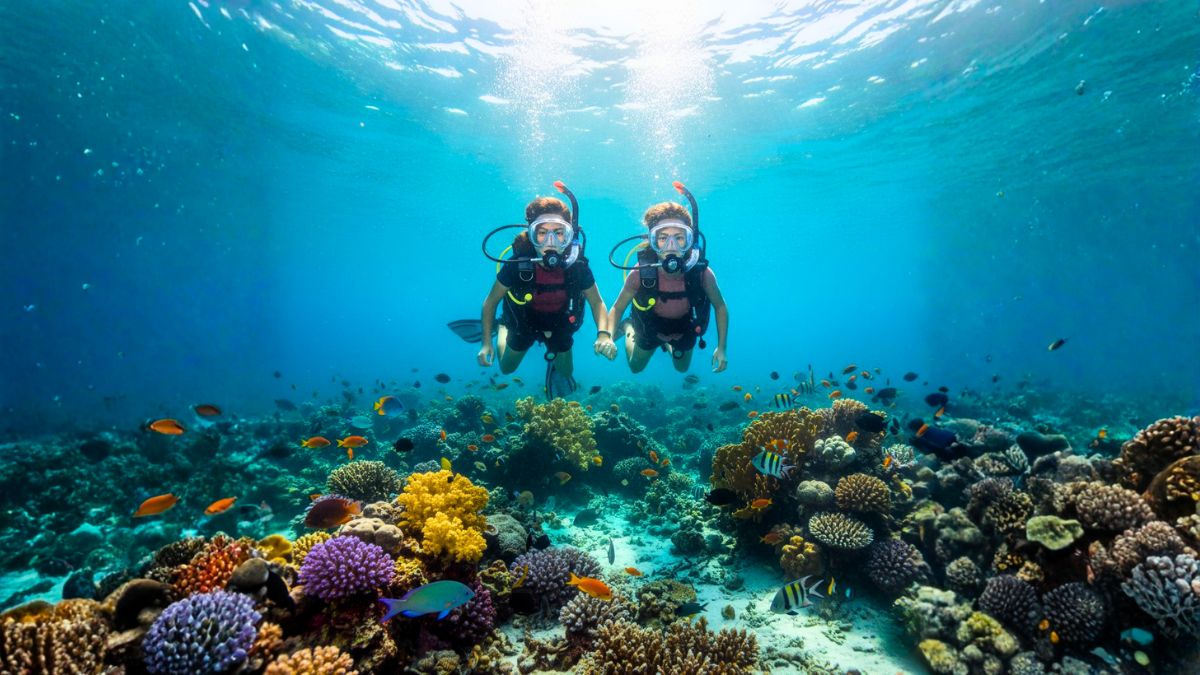Have you ever stood at the water’s edge and wondered what lies beneath? I ask my diving students this question all the time here in Costa Rica. Most guess a few hundred meters. Maybe a kilometer at most.
The answer? It’s far deeper than almost anyone imagines.
As a diving instructor, I spend my days exploring the underwater world. But even after thousands of dives, the ocean’s true depth still amazes me. Water covers 71% of our planet’s surface. We’re talking about more ocean than land.
Yet we know surprisingly little about what exists in the deepest parts.
Today I’m taking you on a journey from the surface all the way down to the ocean floor. You’ll discover how deep the ocean really is and what makes these depths so fascinating.
What Is the Average Depth of the Ocean?
The average depth of the ocean is approximately 3.7 kilometers or 2.3 miles. That might not sound impressive at first. But think about it this way: if you could walk straight down, you’d descend for over two miles before touching bottom.
This average includes shallow coastal waters and the deepest trenches. Most of the ocean floor sits much deeper than recreational divers like us ever reach.
Scientists didn’t always know this figure. For thousands of years, measuring ocean depth remained one of humanity’s greatest challenges.
How Do Scientists Measure Ocean Depth?
The science of measuring water depth is called bathymetry. It sounds complicated, but the basic concept is simple: figure out the distance from surface to seafloor.
Ancient civilizations took their first measurements over 3,000 years ago. Egyptian sailors used weighted ropes to gauge depth. The Phoenicians did the same when they began ocean voyages around 1200 BC.
I can only imagine their frustration. Lowering a rope thousands of meters by hand? That’s exhausting work.
Today we use sophisticated technology. Sonar systems send sound waves to the ocean floor and measure how long they take to bounce back. Satellites can detect tiny variations in sea surface height that indicate underwater mountains and valleys.
These modern tools create detailed bathymetric maps. They’re like topographic maps, but for the ocean floor.
Did you know? French scientist Pierre Simon Laplace calculated the first estimate of average ocean depth in the 1700s. He did it by observing tides and came remarkably close to our modern measurements.
What Is the Deepest Place on Earth?
Where Is the Mariana Trench Located?
The Mariana Trench sits in the western Pacific Ocean. You’ll find it about 200 kilometers east of the Mariana Islands, roughly between Japan and the Philippines.
This isn’t just any underwater valley. It’s a massive crescent-shaped trench stretching 2,500 kilometers long. Think of it as an underwater scar on Earth’s surface.
The British research ship HMS Challenger discovered this trench in 1875. The crew used a simple weighted rope to measure depth. Their reading? An astonishing 8,184 meters.
They had no idea they’d found Earth’s deepest point.
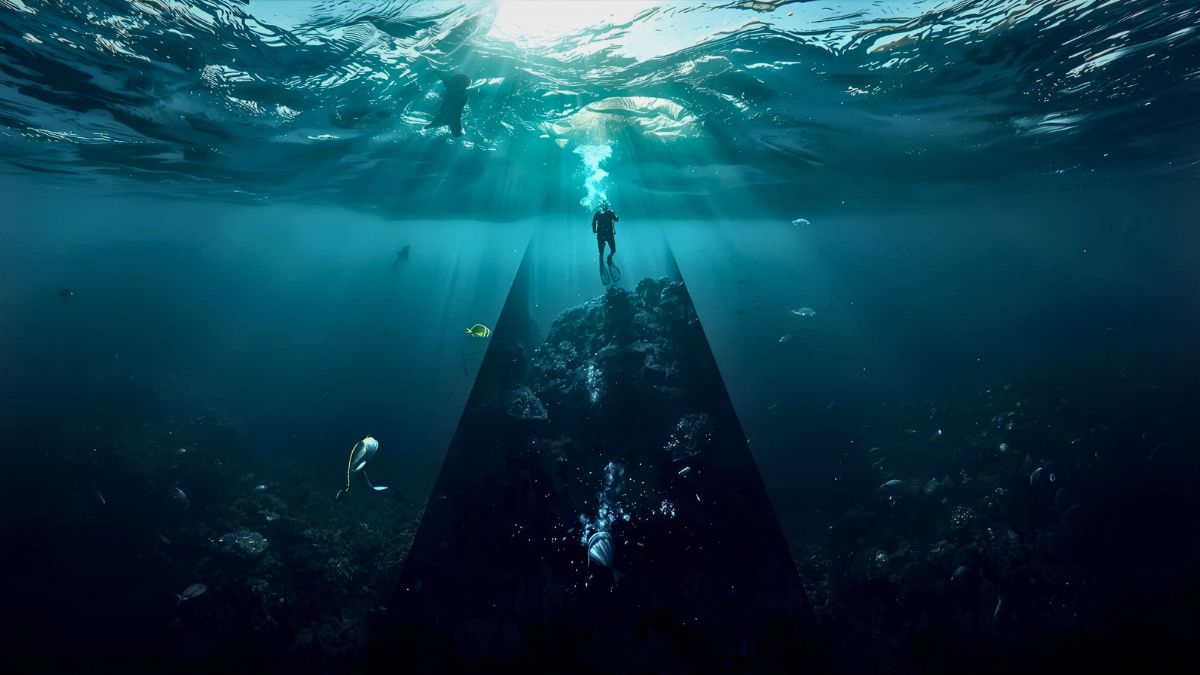
How Deep Is the Challenger Deep?
The deepest point within the Mariana Trench is called Challenger Deep. It honors that pioneering expedition from 1875.
Modern measurements put Challenger Deep at 10,994 meters or 36,069 feet below sea level. That’s almost 11 kilometers straight down.
I teach my students to understand pressure increases underwater. We talk about atmospheres and depth limits. But Challenger Deep? The pressure there reaches over 1,000 atmospheres. Your body would be crushed instantly.
Here’s a comparison that helps: Mount Everest stands 8,848 meters tall. If you picked up the entire mountain and dropped it into Challenger Deep, the peak would still sit over 2 kilometers underwater.
That’s almost incomprehensible.
Are There Other Deep Ocean Trenches?
Challenger Deep holds the record, but it’s not alone. Scientists have identified several extremely deep points across our oceans.
The Five Deeps Expedition confirmed the five deepest known points in 2018-2019. Here’s what they found:
| Rank | Trench Name | Deep Name | Depth (meters) | Depth (feet) | Ocean |
|---|---|---|---|---|---|
| 1 | Mariana Trench | Challenger Deep | 10,924 | 35,840 | Pacific Ocean |
| 2 | Puerto Rico Trench | Brownson Deep | 8,378 | 27,487 | Atlantic Ocean |
| 3 | South Sandwich Trench | Factorian Deep | 7,432 | 24,383 | Southern Ocean |
| 4 | Java Trench | Unnamed | 7,187 | 23,579 | Indian Ocean |
| 5 | Arctic Ocean | Molloy Hole | 5,581 | 18,310 | Arctic Ocean |
Each ocean has its own deepest point. Each represents an extreme environment we’re only beginning to understand.
How Deep Can Humans Dive?
What Are the Limits of Recreational Diving?
When you complete a basic scuba diving course, you’re certified to dive to 18 meters. That’s your starting point.
With experience and additional training, recreational diving maxes out at 40 meters. That’s the absolute limit for standard scuba equipment and compressed air.
I take students to these depths regularly here in Costa Rica. At 40 meters, the pressure is already five times what we experience at the surface. Your air consumption doubles compared to shallow diving.
But 40 meters? That’s only 0.4% of the ocean’s maximum depth. We’re barely scratching the surface.
How Deep Can Technical Divers Go?
Technical divers use specialized equipment and gas mixtures. They can push far beyond recreational limits.
The deepest scuba dive ever recorded happened in 2014. Egyptian diver Ahmed Gabr descended to 332.35 meters. That’s over 1,000 feet.
This dive required years of preparation. Gabr used multiple gas tanks with different mixtures. His ascent took nearly 15 hours because of mandatory decompression stops.
It was an incredible achievement. But even this record represents just 3% of the ocean’s maximum depth.
What About Atmospheric Diving Suits?
An atmospheric diving suit (ADS) is basically a small submarine you can wear. It’s a rigid metal suit that maintains surface pressure inside.
These suits can theoretically reach depths of 700 meters. The diver inside feels no pressure increase at all.
In 1992, researcher Theo Mavrostomos participated in a simulated dive to 701 meters. He sat in a hyperbaric chamber while scientists recreated the pressure conditions. He survived, proving humans could theoretically work at that depth.
But 700 meters still pales compared to the deepest ocean trenches.
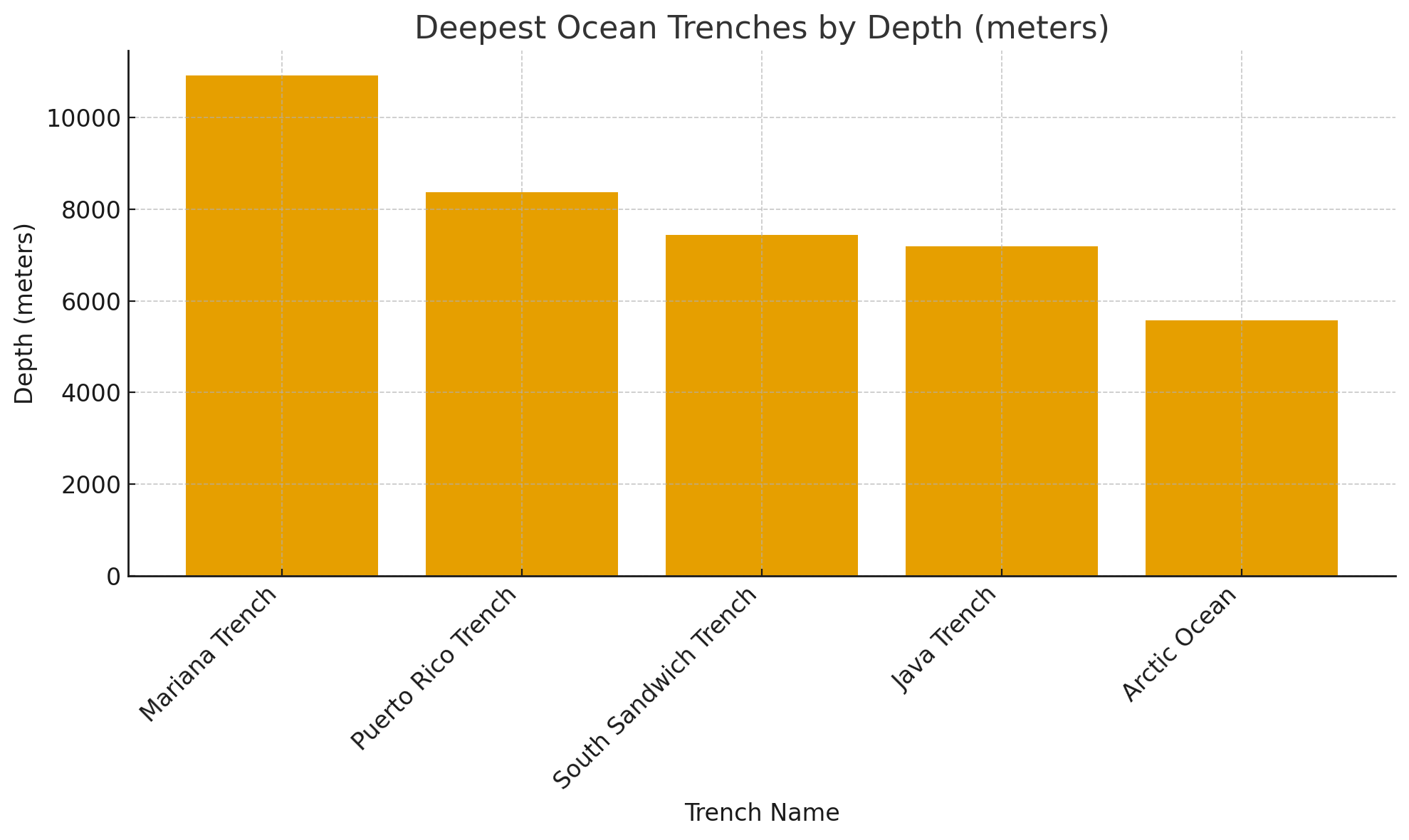
Have Humans Reached the Bottom of the Ocean?
Yes, but only in specialized submersibles.
The first crewed descent to Challenger Deep happened on January 23, 1960. Oceanographer Jacques Piccard and U.S. Navy Lieutenant Don Walsh climbed into a bathyscaphe called Trieste.
They descended for nearly five hours. At the bottom, they spent just 20 minutes at 10,911 meters deep. The immense pressure cracked one of their windows during the dive.
More than 50 years passed before anyone returned.
Filmmaker James Cameron made the next solo descent in 2012. He reached 10,898 meters in his custom-built submersible. He spent three hours exploring and filming.
In 2019, Victor Vescovo broke the record with a depth of 10,928 meters. He’s made multiple dives since, advancing our understanding of the deepest ocean.
Fun fact: Victor Vescovo found plastic waste at the bottom of Challenger Deep. Not even the remotest place on Earth is safe from human pollution.
What Makes Deep Ocean Exploration So Difficult?
How Does Pressure Increase With Depth?
At sea level, atmospheric pressure pushes down on us with a force of one atmosphere. We don’t notice it because we’ve evolved to live with it.
Underwater, pressure increases dramatically. Every 10 meters of depth adds another atmosphere of pressure.
At 40 meters (recreational diving limit), you experience five atmospheres. Your body can handle this with proper training and equipment.
At Challenger Deep’s 11,000 meters, the pressure reaches approximately 1,100 atmospheres. That’s 16,000 pounds per square inch.
Imagine an elephant standing on your thumbnail. Then multiply that pressure by a thousand. Your bones would dissolve. Your lungs would collapse. Death would be instantaneous.
What Are the Environmental Conditions at Extreme Depths?
Pressure isn’t the only challenge. The deep ocean is one of Earth’s most hostile environments.
Sunlight disappears completely below 1,000 meters. Everything below this point exists in absolute darkness. No plants can survive without sunlight for photosynthesis.
Temperatures hover just above freezing. Most deep ocean water sits between 1-4 degrees Celsius. The only exceptions are near hydrothermal vents, where superheated water can reach 400 degrees Celsius.
Food is incredibly scarce. Deep sea creatures survive on “marine snow” – tiny particles of organic matter that drift down from the surface. It takes weeks or months for a meal to arrive.
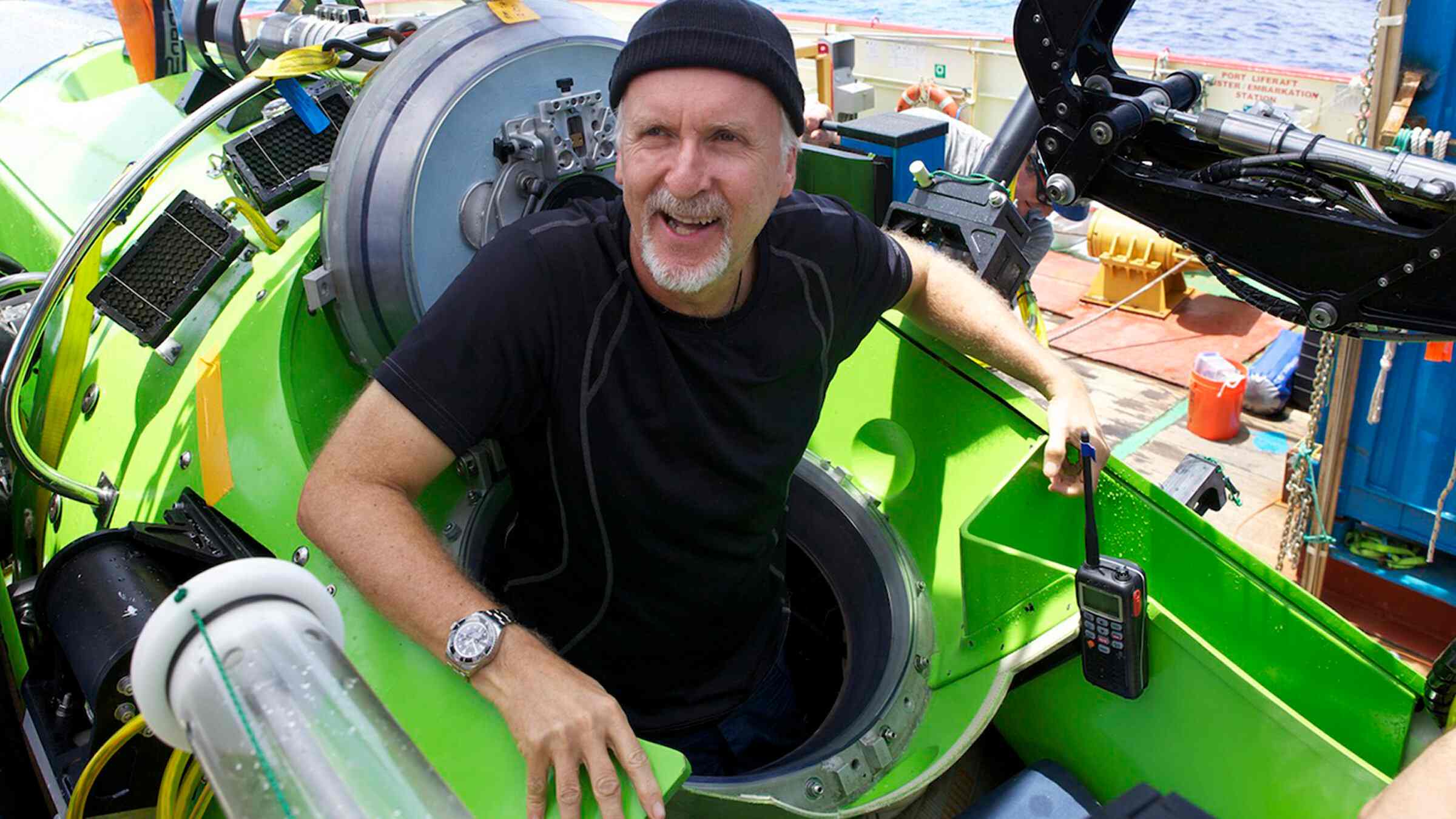
Understanding Ocean Depth Zones
What Are the Five Ocean Zones?
Marine biologists divide the ocean into five distinct zones based on depth and light penetration. Each zone has unique characteristics and inhabitants.
The Epipelagic Zone (Sunlight Zone): 0-200 Meters
This is where I spend most of my time as a diving instructor. Sunlight penetrates throughout this zone, supporting photosynthesis.
The epipelagic zone is home to coral reefs, most fish species, sea turtles, dolphins, and countless other creatures. It’s the ocean’s most biodiverse region.
The Mesopelagic Zone (Twilight Zone): 200-1,000 Meters
Sunlight fades rapidly here. Only faint blue light reaches these depths. Plants cannot survive, but many animals migrate here daily to feed.
This zone contains more fish biomass than all other ocean zones combined. Most species have adapted with large eyes to capture minimal light.
The Bathypelagic Zone (Midnight Zone): 1,000-4,000 Meters
Complete darkness begins here. The only light comes from bioluminescent creatures that produce their own glow.
Animals in this zone look alien to us. Many have enormous mouths, expandable stomachs, and strange appendages. They’ve adapted to catch any food that drifts by.
The Abyssopelagic Zone (The Abyss): 4,000-6,000 Meters
The abyss is cold, dark, and almost lifeless. Temperatures hover just above freezing. Pressure is immense.
Few creatures survive here. Those that do have extraordinary adaptations like gelatinous bodies that resist crushing pressure.
The Hadopelagic Zone (The Trenches): Below 6,000 Meters
Named after Hades, the Greek underworld, this zone exists only in the deepest ocean trenches. It represents less than 0.2% of the ocean floor.
The Challenger Deep sits at the bottom of this zone. Until recently, scientists believed nothing could survive here.
They were wrong.
What Lives in Each Ocean Zone?
Life exists at every ocean depth, though it becomes increasingly sparse the deeper you go.
In the sunlight zone where I dive, you’ll see colorful reef fish, sea turtles, rays, and occasionally larger species like whale sharks.
The twilight zone hosts lanternfish, hatchetfish, and squid. Many species migrate vertically each day, rising to feed at night.
The midnight zone contains anglerfish with glowing lures, gulper eels with massive mouths, and giant squid up to 13 meters long.
The abyss harbors tube worms near hydrothermal vents, tripod fish that stand on the seafloor, and sea cucumbers that filter sediment.
The hadal zone? We’re still discovering what lives there.
What Animals Live at Extreme Ocean Depths?
Can Any Animals Survive in the Deepest Parts?
Scientists once believed the hadal zone was too extreme for life. The pressure, darkness, and cold seemed insurmountable.
Exploration proved them wrong.
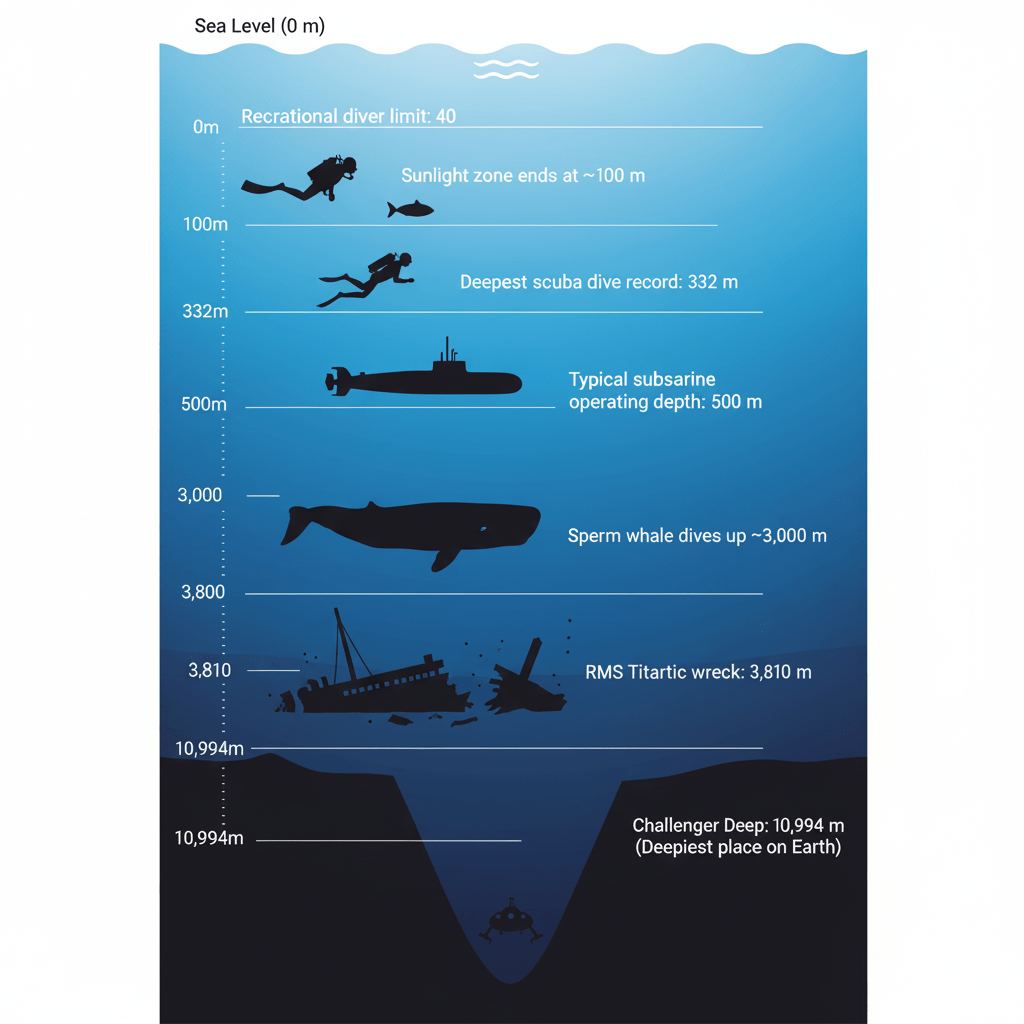
Snailfish hold the record for the deepest living fish, found at depths exceeding 8,000 meters. They have translucent bodies and no swim bladder.
Deep-sea creatures
Amphipods (tiny shrimp-like creatures) thrive even deeper. Scientists have captured specimens from the bottom of Challenger Deep at nearly 11,000 meters.
Microorganisms and bacteria survive near hydrothermal vents. They metabolize chemicals like hydrogen and methane released from Earth’s crust.
These creatures have evolved remarkable adaptations. Their bodies contain special proteins that function under extreme pressure. They have no air-filled organs that would collapse. Some produce antifreeze compounds to survive near-freezing temperatures.
How Deep Can Marine Mammals Dive?
Marine mammals can’t reach the deepest trenches, but some dive to impressive depths.
The Cuvier’s beaked whale holds the mammal diving record at 2,992 meters. These whales can hold their breath for over two hours while hunting deep-sea squid.
Sperm whales regularly dive to 2,250 meters. They hunt giant squid in the dark depths.
Even these champion divers can only reach about 27% of the ocean’s maximum depth. The deepest parts remain forever beyond their reach.
Did you know? More people have walked on the moon than have visited the bottom of Challenger Deep. Only four humans have ever made the journey.
Why Should Divers Care About Ocean Depth?
You might wonder why ocean depth matters to recreational divers. We never go deeper than 40 meters. The deepest trenches seem irrelevant to our diving.
But understanding how deep the ocean is changes your perspective.
When I teach pressure theory and depth limits, students grasp these concepts better when they understand the ocean’s true scale. You realize that recreational diving only scratches the surface.
It builds respect for the ocean. You appreciate the vast ecosystem beneath our fins. You understand why proper training and safety procedures matter.
It also inspires conservation awareness. The deep ocean faces threats from pollution, climate change, and deep-sea mining. Understanding its vastness and vulnerability motivates us to protect it.
Every dive connects you to this massive system. Even at 18 meters depth, you’re part of an ocean that extends down over 10 kilometers below.
That perspective changes everything.
So, How Deep Is the Ocean Really?
The ocean averages 3.7 kilometers deep. But that’s just the average. The deepest known point drops to 10,994 meters below the surface.
Mount Everest is 8,848 meters tall. The Challenger Deep could swallow it completely with over 2 kilometers of water to spare.
Only a handful of humans have explored these depths. The pressure alone would kill you instantly. The darkness is absolute. The cold is brutal.
Yet life survives there. Creatures we’re only beginning to understand have adapted to crushing pressure that would destroy our bodies in seconds.
As divers, we explore maybe 0.4% of the ocean’s total depth range. But every dive connects us to this vast system stretching kilometers below our fins.
That changes how you see the ocean.
Start Your Ocean Exploration Journey
Want to start your own ocean exploration? You don’t need to reach Challenger Deep to experience the underwater world’s magic.
A PADI Open Water Diver course opens the door. Here in Costa Rica, I can take you diving at some of the Pacific’s most beautiful sites. We’ll explore coral reefs, swim with sea turtles, and discover marine life that will leave you speechless.
The ocean’s greatest depths might be beyond our reach. But incredible adventures are waiting at 18 meters.
Ready to take the plunge?
Sources and References
This article references data from authoritative sources including:
- NOAA (National Oceanic and Atmospheric Administration)
- Five Deeps Expedition research published in Geoscience Data Journal
- Natural History Museum – Ocean Depth
- Woods Hole Oceanographic Institution – Deep Sea Exploration


